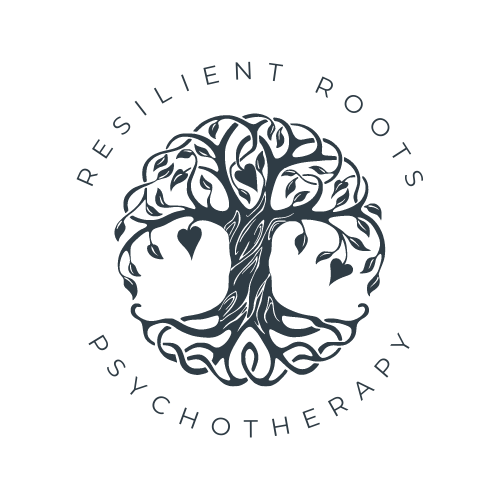Parallels Between Manifestation and CBT: Creating a Balanced Life Through Thought, Feeling, and Action
In the realm of personal development, two powerful approaches, manifestation and Cognitive Behavioral Therapy (CBT), emphasize the transformative power of our thoughts. Manifestation involves using focused thoughts and beliefs to bring positive change into our lives. Meanwhile, CBT helps us understand how our thoughts, feelings, and behaviors are interconnected and how we can change them to feel better and achieve our goals.
Understanding Manifestation:
Manifestation centers on the idea that our focused thoughts and strong beliefs directly influence our reality. Essentially, it’s setting a deliberate intention for what we desire to achieve or attract into our lives. For example, when you vividly imagine yourself thriving in a new job—visualizing yourself in that role and experiencing the satisfaction of success, you not only boost your confidence but also align your thoughts and actions with the steps needed to make that vision a reality. Affirmations, positive statements repeated to reinforce desired outcomes, and visualization, where you mentally picture achieving your goals, are practical techniques that help firmly establish these beliefs in your subconscious mind. These practices go beyond wishful thinking; they actively program your mind to focus on opportunities and possibilities that resonate with your aspirations. Consistently engaging in these techniques creates a mindset naturally inclined toward positive outcomes and personal growth opportunities.
The Cognitive Triangle in CBT:
The Cognitive Triangle in CBT explains how our thoughts, emotions, and behaviors interact and influence each other, allowing us to recognize and change negative thought patterns that cause emotional distress or hold us back from achieving our goals. For example, believing, "I'll never succeed" can lead to feelings of discouragement, anxiety, or even hopelessness. These emotions may manifest in behaviors, such as avoiding challenges or giving up prematurely on goals. In contrast, CBT encourages us to challenge and replace such beliefs with more realistic and supportive thoughts like, "I can learn from setbacks and keep improving." This shift fosters feelings of optimism, determination, and self-confidence by reframing setbacks as opportunities for growth rather than insurmountable obstacles. Embracing this mindset promotes proactive behaviors like seeking feedback, experimenting with new approaches, and setting achievable goals, reinforcing the understanding that effort and persistence lead to progress.
The Power of Intention
Setting clear intentions is essential in both manifestation and CBT, echoing Dr. Wayne Dyer's belief that "Our intention creates our reality." This insight underscores the profound influence our thoughts have on shaping our lives. When you set clear intentions, you effectively map out a path for your mind and behavior. This process enables you to concentrate on your desired outcomes and align your efforts towards achieving them. Intentionality serves to clarify your goals, making it easier to sustain motivation and resilience in the face of challenges. It provides a clear sense of direction and purpose, empowering you to take deliberate actions that propel you closer to your aspirations. This focused mindset not only increases your likelihood of success but also supports a positive outlook, even amidst obstacles. By consistently setting and reaffirming your intentions, you establish a mental framework that nurtures personal growth and well-being, equipping you with the confidence and determination needed to navigate life's complexities effectively.
Applying Principles in Daily Life:
You can integrate Manifestation and CBT principles into your daily routine to improve your life:
Manifestation Practices: Start each day by affirming positive outcomes you wish to achieve, such as career success or improved relationships. Visualize these goals with vivid detail, engaging your senses to reinforce your belief in their attainment. Keeping a gratitude journal daily helps maintain focus on the positives in your life, attracting more moments of gratitude and fulfillment.
CBT Techniques: Integrate cognitive behavioral techniques into your routine by monitoring your thoughts closely. When negative thoughts arise, challenge them by gathering evidence that supports a more balanced and realistic perspective. For instance, if you doubt your abilities for a task, recall past successes or seek feedback to validate your capabilities. Take small, actionable steps toward your goals to build confidence gradually and overcome any fears or doubts that may arise.
Scenario 1: Overcoming Social Anxiety
Manifestation Practice: Start by setting an intention to feel comfortable and confident in social situations. Affirmations like, "I am calm and at ease in social gatherings" or, "I enjoy meeting new people and engaging in conversations" can help. Visualize yourself socializing effortlessly, feeling relaxed and enjoying meaningful interactions.
CBT Technique: Monitor your thoughts in social settings. Challenge negative thoughts such as, "Everyone is judging me" or, "I'll embarrass myself" by recalling positive interactions and responses. Replace these thoughts with supportive statements like, "I can handle social situations, and I have valuable contributions to make."
Integration: Before social events, visualize successful interactions and build confidence. Practice mindfulness to manage anxiety during interactions and use positive self-talk to maintain a positive mindset. Reflect afterward, noting progress and areas for growth without self-criticism.
Scenario 2: Overcoming Self-Doubt
Manifestation Practice: Set a clear intention to overcome self-doubt and cultivate confidence. Affirmations like, "I believe in my abilities to succeed" or, "I am worthy of achieving my goals" can reinforce this. Visualize yourself confidently tackling challenges and feeling empowered.
CBT Technique: Monitor and challenge self-doubting thoughts such as, "I'm not good enough" or, "I'll never succeed." Use evidence of past achievements and positive feedback to counter these beliefs. Replace them with encouraging statements like, "I have the skills and resilience to overcome obstacles."
Integration: Incorporate these practices into daily routines and goal-setting. Visualize success and practice mindfulness to manage doubts. Use affirmations regularly to strengthen self-belief and reflect on progress and successes to reinforce confidence.
Scenario 3: Overcoming People-Pleasing Behavior
Manifestation Practice: Set an intention to overcome people-pleasing and establish healthy boundaries in relationships. Affirmations such as, "I prioritize my needs while respecting others" or, "I confidently express my authentic self" can support this. Visualize assertively communicating needs and feeling respected.
CBT Technique: Monitor people-pleasing behaviors and challenge tendencies to fear rejection or prioritize others' needs. Use examples where setting boundaries improved relationships. Replace negative thoughts with affirmations like, "My needs are as important as others', and I deserve to be heard."
Integration: Apply practices in daily interactions. Visualize confidently expressing opinions and practicing assertiveness. Use mindfulness to manage emotions and reactions, and practice positive self-talk to reinforce assertiveness.
As illustrated through scenarios of overcoming social anxiety, self-doubt, and people-pleasing behaviors, both manifestation and CBT offer practical tools to reshape our mindset and enhance well-being.
Manifestation and CBT provide powerful frameworks for leveraging the influence of your thoughts to affect positive changes in your life. By recognizing the connection between your thoughts, emotions, and behaviors, and by engaging in practices such as affirmations and cognitive restructuring, you can actively shape and change your mindset. This approach empowers you to overcome self-limiting beliefs, develop resilience despite adversity, and cultivate a mindset that supports ongoing personal growth and well-being. Whether you're aiming to enhance relationships, achieve professional milestones, or improve overall happiness, integrating manifestation and CBT techniques equips you with practical tools to rewire negative and limiting thoughts.
Explore these techniques in your own life to see how they can help you achieve your goals and improve your overall happiness. For personalized guidance on using these practices effectively, consider exploring therapy and hypnotherapy to connect with your subconscious mind and deepen your self-awareness. For those in Indiana or Colorado interested in learning more, schedule a free consultation today.

